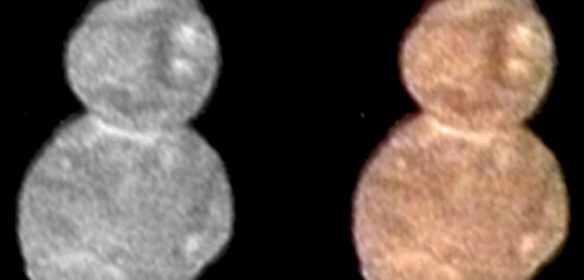Icy World Past Pluto – Looks Like a Snowman

|
Getting your Trinity Audio player ready...
|
Out past Pluto NASA has spotted an icy formation that is about 4 billion miles past Earth. This formation has been named Ultima Thule and looks like a snowman. The spacecraft New Horizons while on autopilot is sending back black and white photos to Mission Control in Maryland. This is very exciting since this is the first time a spacecraft has traveled this far out. Fifty years ago, we landed a man on the moon and this discovery is 17,000 times as far away.
The spacecraft New Horizons is roughly the size of a baby grand piano and is expected to flyby at about 2,200 miles from Ultima Thule. Which is closer than we came to the planet Pluto back in 2015. It takes approximately six hours for the radio signals from the spacecraft to reach Earth. Ultima Thule according to scientists does not have any rings or moons that would endanger the spacecraft. New Horizons travels at a speed of 31,500 miles per hour and if a particle around the size of a small seed were to collide with the spacecraft it could cause some damage.
The Hubble Space Telescope discovered Ultima Thule back in 2014. New Horizons was launched back in 2006 and after the discovery by the Hubble Telescope they changed the itinerary for the spacecraft to check it out.
The Kuiper Belt is known to be a very cold expanse out beyond Neptune where Ultima Thule has been discovered to be located. It has been found to be about 4.5 billion years old and formed around the same time as our solar system. Scientists are hoping to understand more about our solar system with the discovery of Ultima Thule. They believe that the size of Ultima Thule is about 20 miles long with a showman shape that may be two bodies either stuck together or floating very close to one another. When New Horizons sends back more information they will have a better understanding of this formation that should take approximately two years to receive.

 Print
Print